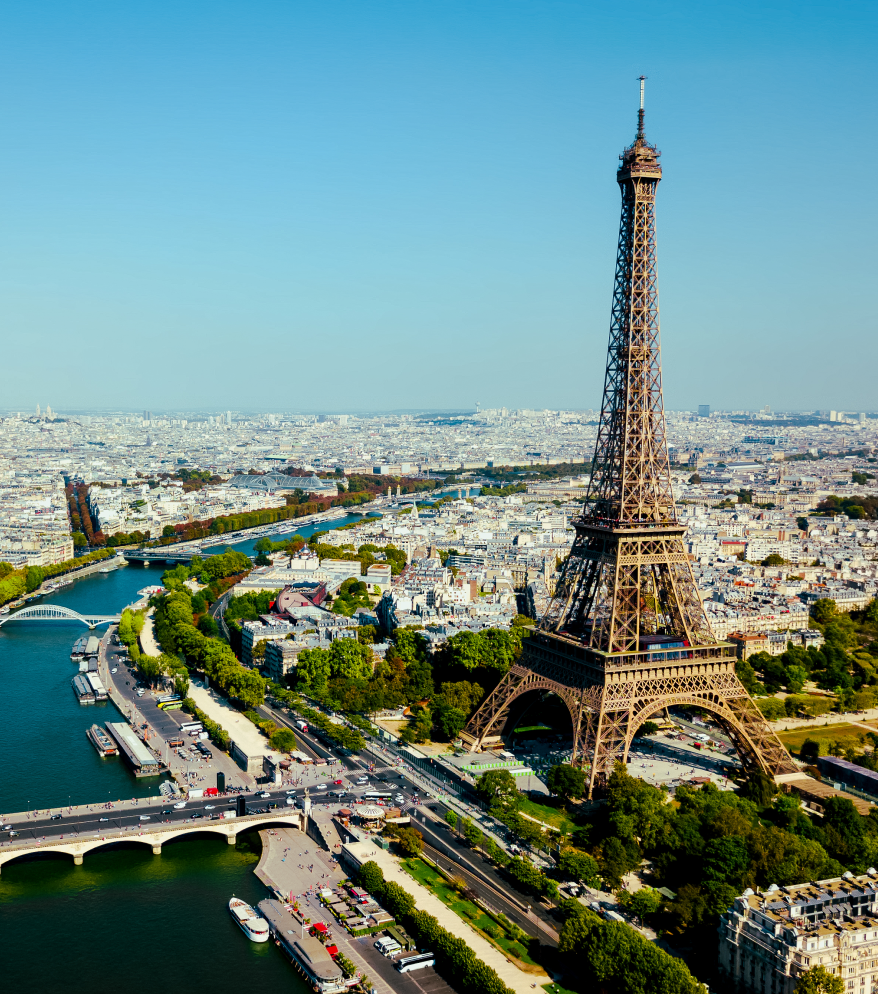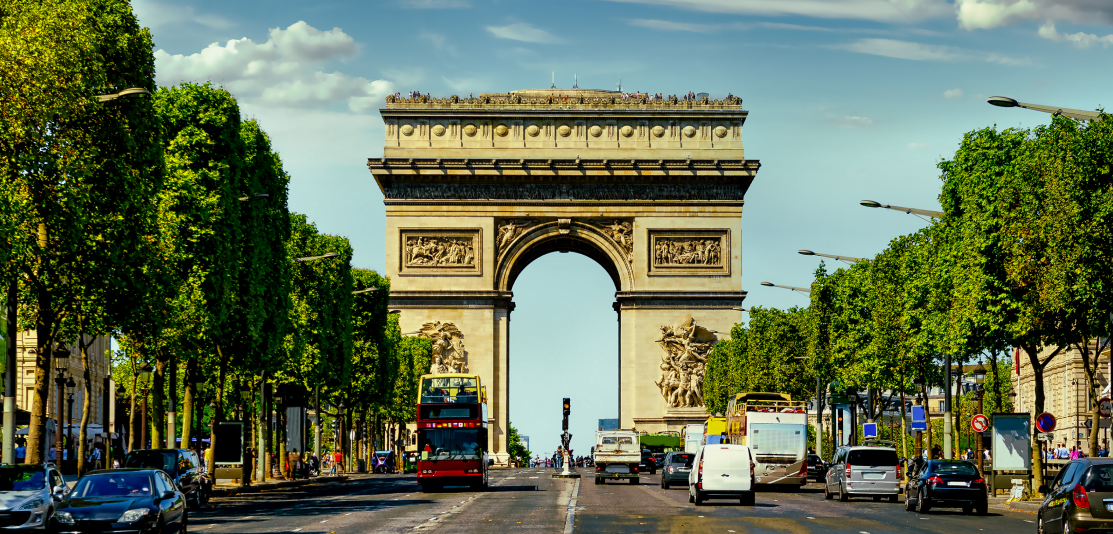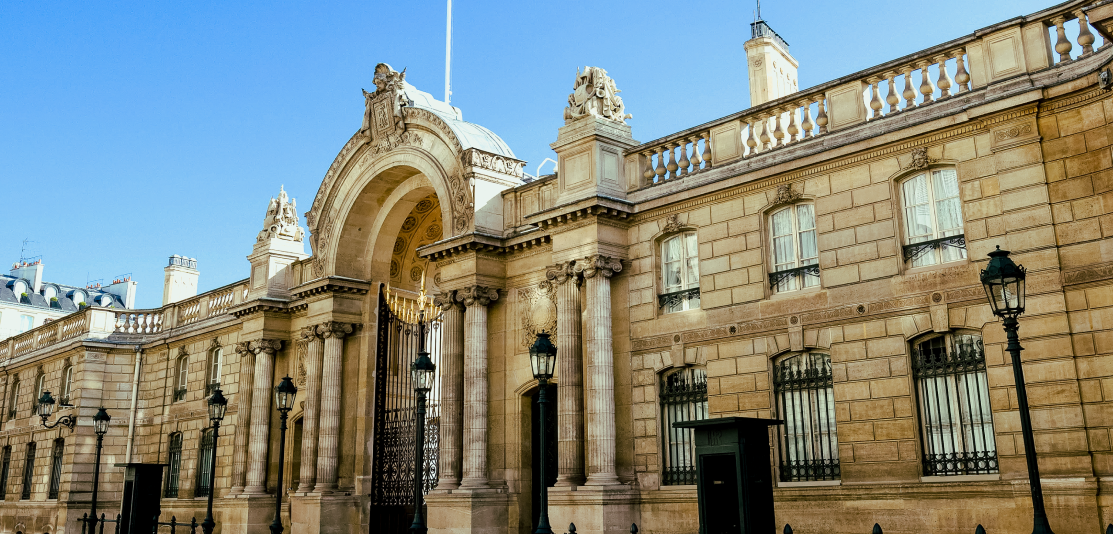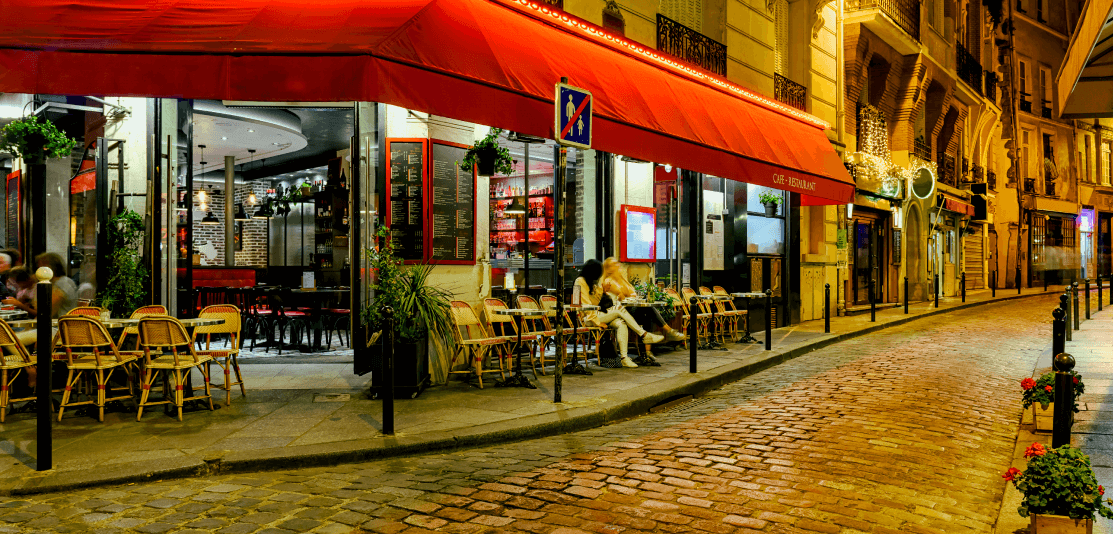Morning
Bonjour! Before you start your historic tour of the Latin Quarter, breakfast is in order. Head to Kozy, a hugely popular breakfast spot near the Notre Dame that caters to every breakfast preference, whether you’re in the mood for a café et croissant, a full brunch, or granola (each to their own).
Kozy Notre Dame
Address:
6 Rue du Petit Pont, 75005, Paris
Opening times:
Monday to Friday: 8:30-15:00
Saturday and Sunday: 9:30-17:00
Once you’re fuelled and ready for your history fix, amble through the Latin Quarter, towards the Sorbonne - the heart of the events in May 1968.
The Sorbonne
Address: 47 Rue des Écoles, 75005 Paris, France
Opening times: Monday-Friday: 9:00-17:00
Cost: 15 euros for a guided tour
What to know: Visits take place by pre-booked guided tour (in French), which happen every 30 minutes on weekdays, and on one Saturday per month.
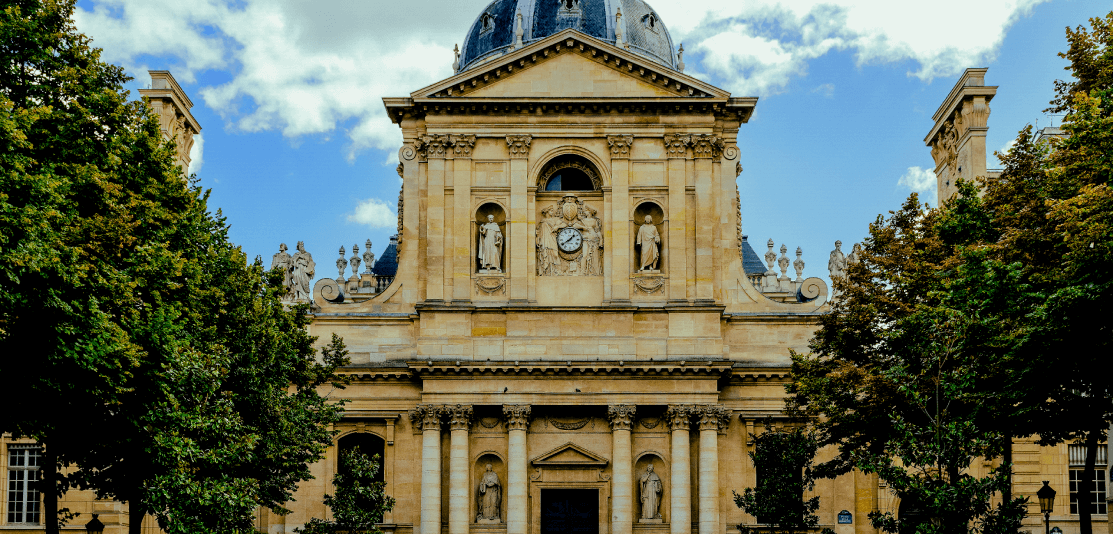
The Sorbonne is one of the oldest universities in Europe, having been founded in the 13th century. It was open for 700 years, until it was forced to shut for the first time during the protests.
Named after its founder, Robert de Sorbon, chaplain and confessor of Louis IX, the university’s famous alumni include Pierre and Marie Curie and Vera Wang, and it has provided a formidable backdrop for much of the city’s history.
Today, it remains one of the world's most respected universities. Yet the sixties were a low point for the institution. Overfilled with students, the university was blighted by crumbling buildings, overcrowded lecture theatres and makeshift overspill buildings. Students lived in poor accommodation, and the quality of teaching was subpar too. All this created tension between students and the university administration.
And yet - nobody expected the protests to happen. The sixties may have been swinging elsewhere, but France’s youth were felt to be immune, and the country was enjoying a post-war prosperity boom. De Gaulle had a certain sense of France - and it did not include rebellious youngsters. Indeed, The Beatles were taken aback when they performed in Paris, shocked by the crowd not screaming.
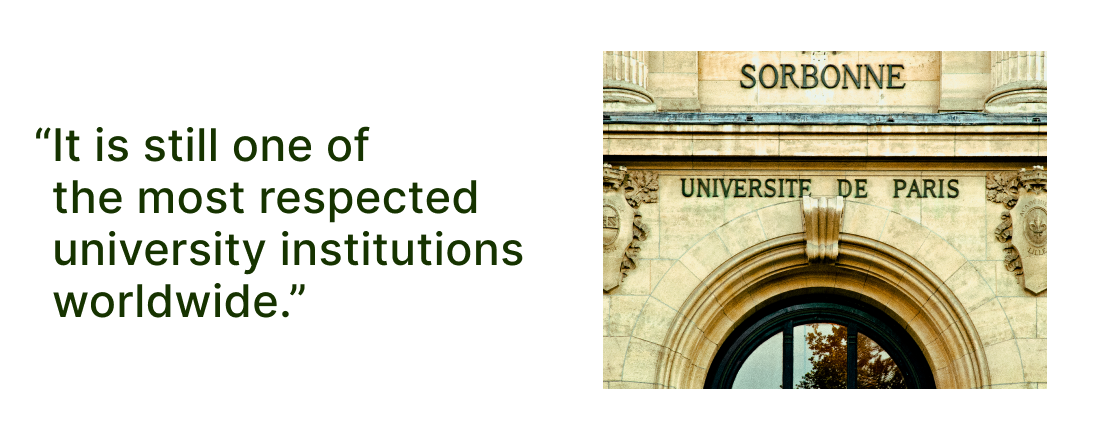
The protests actually started in Nanterre, a suburb of Paris, where a long-promised modern campus was set to be built. Yet the campus never materialised. Annoyed and disillusioned by the lack of facilities, and their bad treatment by university staff, students held a protest at Nanterre.
The reaction from police and the Sorbonne administration was severe — they shut the campus down as a response to the (at this point, fairly mild) protests. The students then simply moved the protests to the Sorbonne’s main campus, right in the heart of the city.
Rediscovering history is thirsty work — time to find a café where you can sit outside Parisian-style and watch the city go by and sip on a café au lait (maybe put the cobblestone down first).
Cafe La Bûcherie
Address:
41 Rue de la Bûcherie, 75005 Paris, France
Opening times:
Monday-Sunday: 07:00-02:00am
Tom and Dominic visited nearby Café La Bûcherie, so head there if you truly want to travel like a historian. This café is also a short walk away from Rue Gay Lussac, where some of the worst clashes between protestors and police took place.
Les Deux Magots
Address:
6, Place Saint-Germain-des-Prés, 75006 Paris
Opening times:
Monday-Sunday: 07:30-1:00am
If you want to explore more of the arrondissement, Les Deux Magots café is only a short walk away and provides another option. It is the site of many philosophical and artistic musings: authors like Hemingway, Jean-Paul Sartre and Simone de Beauvoir spent much of their time socialising, writing and contemplating life here.
Tempting, perhaps, to imagine what the game-hunting, war-reporting Papa would have made of well-off students miming and engaging in niche performance art as a way of protesting their out-of-touch teachers.
Try the café’s famous hot chocolate (no hot water and chocolate powder here), and muse over the philosophies of 20th century France, and the social structures that led to this clash between President de Gaulle and the students of the Sorbonne.
Careful, though — you don’t want to risk being marked as a bourgeois and end up on the wrong side of history.
Théatre de l’Odéon
Address:
2 rue Corneille, 75006 Paris
Opening times:
Check theatre website for showtimes
A beautiful 19th century building, the theatre is worth a visit for the architecture alone. However, it also played witness to some of the most important events during the protests. The students used it as a meeting place, and it became a forum for performance art and protesting through theatre. Its directors, Jean-Louis Barrault and his wife Madeleine Renaud, proclaimed "L'Odéon est mort" ("The Odéon is dead").
Ecole des Beaux-Arts
Address:
14, rue Bonaparte, 75006 Paris
Opening times:
Check website for exhibition opening times
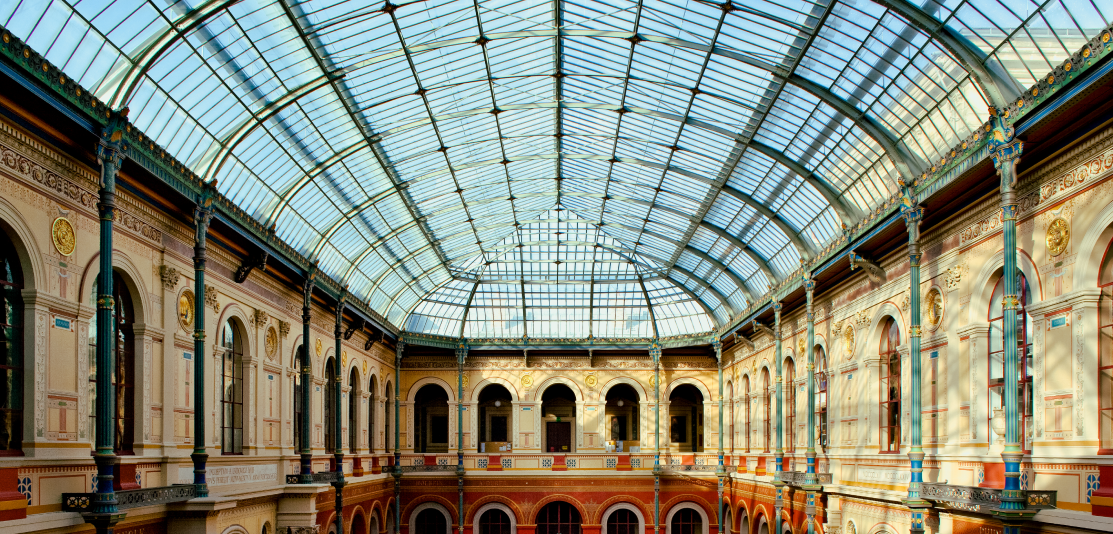
The École des Beaux-Arts also saw a lot of action during the protests. Famous slogans like "la chienlit, c'est lui!” (referring to De Gaulle; roughly translates to - the mess is him), were created here. Most of the campaign posters, which are now iconic symbols of the protests, were also designed here.
So, where were we?
Ah yes, the protests. So, the shuttering of the Nanterre campus led to large-scale protests by the main Sorbonne campus in the Latin Quarter. The air was thick with tear gas, riot police, and the sound of glass breaking as police and protesters clashed.
De Gaulle tried to downplay the situation, joking that students were “protesting so that their exams would get cancelled”.
At the same time, workers also started to go on strike, frustrated by years of being looked down upon and ignored by France’s deeply stratified society. Enthusiasm for the strikes spread quickly, and in less than two weeks, two thirds of the country’s workforce was on strike.
After some initial doubts, the communist party became involved in the movement, planning a march for the 29th March.
Shakespeare and Company
Address:
37 rue de la Bûcherie, 75005 Paris, France
Opening times:
Bookshop
Monday- Saturday: 10:00-20:00 Sunday: 12:00-7:00pm
Café:
Monday-Friday: 9:30am-7:00pm
Saturday-Sunday: 9:30am-8:00pm
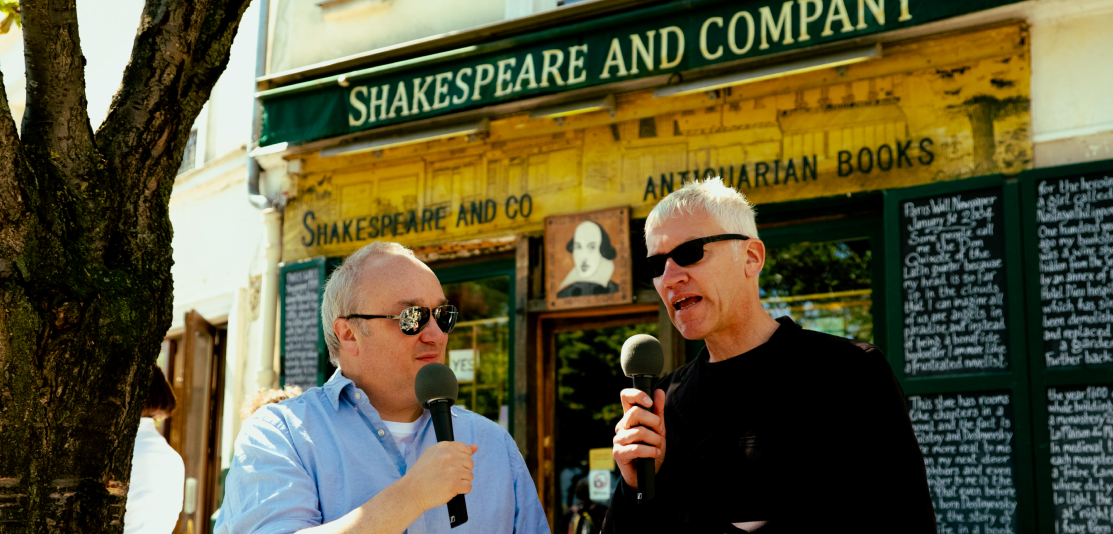
Before we go back to the story — another recommendation. Founded in 1951, the Shakespeare & Company bookshop has become a Rive Gauche institution. The building, first constructed in the 17th century as a monastery, is located at Kilometre Zero, the point from which all distances in France are measured.
If you have any social media accounts, you’ll have likely seen videos of long queues of people lining up to buy Shakespeare and Company’s famous tote bag. Despite this, the building has a lot of charm, and the adjoining café is usually calmer. Perhaps pick up some left wing literature to really get in the right frame of mind.
